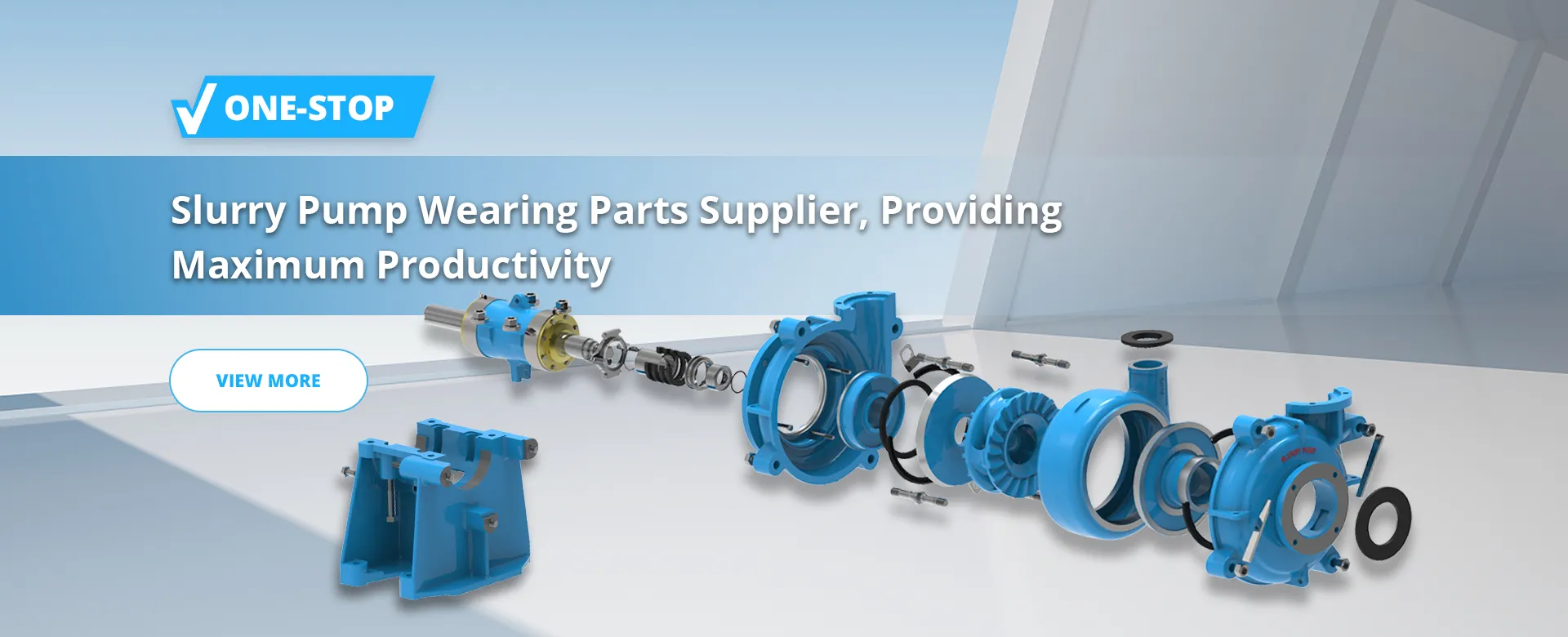-
 support@minemaxx.com
support@minemaxx.com
-
 0086-311-87833311
0086-311-87833311
 NO.8 JIHENG STREET,QIAOXI DISTRICT,SHIJIAZHUANG,HEBEI,CHINA
NO.8 JIHENG STREET,QIAOXI DISTRICT,SHIJIAZHUANG,HEBEI,CHINA
function of wear ring in centrifugal pump
The Function of the Wear Ring in Centrifugal Pumps
Centrifugal pumps are essential components in various industrial applications, designed to move fluids by converting rotational energy into hydrodynamic energy. Among the critical components of a centrifugal pump is the wear ring, an often-overlooked but essential part that plays a significant role in the pump’s performance and longevity.
Understanding Wear Rings
Wear rings are located in the spacing between the impeller and the pump casing. They serve as a barrier that minimizes the flow of fluid between these two components. When a centrifugal pump operates, fluid must flow from the impeller through the volute, and any leakage around the impeller can decrease the pump's efficiency, leading to reduced performance.
Functionality and Purpose
The primary function of the wear ring is to limit the radial gap between the impeller and the casing, thereby controlling the recirculation of liquids back into the pump intake. This recirculation can lead to reduced performance due to cavitation and increased energy consumption. By maintaining a small and controlled gap, wear rings help to minimize this leakage, ensuring that the pump operates with maximum effectiveness.
In addition to improving the hydraulic performance of the pump, wear rings also play a pivotal role in protecting the impeller and casing from wear and tear. Continuous contact with liquids can cause erosion and corrosion, leading to premature failure of these components. Wear rings are designed to take the brunt of this wear, extending the service life of more expensive primary components.
Material Selection and Design
function of wear ring in centrifugal pump

Wear rings are typically made from materials with high wear resistance, such as bronze, plastic polymers, or ceramics. The choice of material often depends on the type of fluid being pumped, operating temperatures, and pressures. For example, in chemical processing applications where corrosive fluids are handled, wear rings made from chemical-resistant plastics may be preferable.
The design of wear rings is also critical. They can be either stationary or rotating, depending on the specific application and pump design. In some cases, a bearing-type wear ring may be employed to support the impeller, enhancing stability and reducing vibration during operation.
Impact on Efficiency and Maintenance
The condition of the wear ring has a direct impact on the overall efficiency of a centrifugal pump. Over time, wear rings can degrade due to constant friction and exposure to fluid dynamics. If wear rings become excessively worn or damaged, it can lead to significant issues, including reduced flow rates, increased energy consumption, and potential mechanical failure.
Regular maintenance and inspections are essential to ensure wear rings remain effective. Most manufacturers recommend periodic checks to assess wear and replace them when they reach a certain threshold. This not only maximizes the operational efficiency of the pump but also minimizes the risk of costly downtimes.
Conclusion
In summary, wear rings are a crucial component of centrifugal pumps that contribute to their efficiency, reliability, and longevity. By minimizing leakage, protecting critical components from wear, and reducing energy consumption, wear rings ensure that pumps can perform optimally in various applications. Understanding their function and maintaining them properly are vital for anyone involved in the operation and maintenance of centrifugal pumps. As such, attention to wear ring condition can lead to significant economic benefits and improved system performance in the long run.
-
Wet Parts for Optimal PerformanceNewsOct.10,2024
-
Vertical Pump Centrifugal SolutionsNewsOct.10,2024
-
Top Slurry Pump ManufacturersNewsOct.10,2024
-
The Ultimate Guide to Centrifugal Pump for SlurryNewsOct.10,2024
-
Pump Bearing Types for Optimal PerformanceNewsOct.10,2024
-
A Guide to Top Slurry Pump SuppliersNewsOct.10,2024
-
Slurry Pump Parts for Optimal PerformanceNewsSep.25,2024

